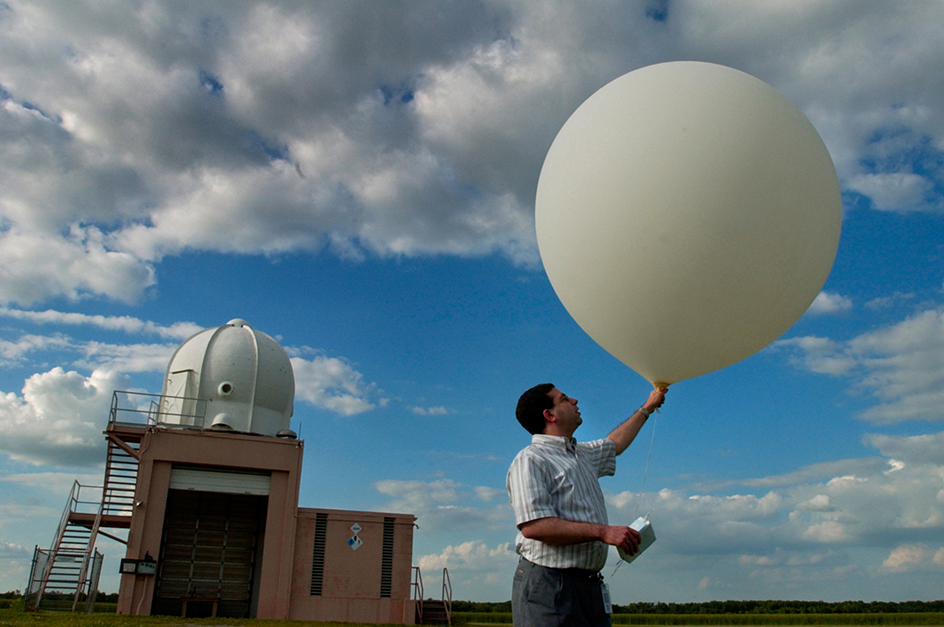Weather balloon is a balloon used to lift scientific instruments high into Earth’s atmosphere. Such instruments help study the sky and weather. The balloons are released with a radiosonde attached underneath. A radiosonde holds measuring devices and radio transmitters that send data back to the ground (see Radiosonde ).

Weather balloons are typically made from latex or synthetic rubber bags. They are filled with hydrogen or helium gas. Hydrogen and helium are lighter than air, causing the balloon to float. As the balloon rises, the gas inside expands, stretching out the bag. Weather balloons can travel over 125 miles (200 kilometers), reaching heights above 20 miles (30 kilometers). Eventually, the gas expands so much that it causes the balloon to burst. A typical weather balloon may be 6 feet (2 meter) in diameter when launched and expand to 20 feet (6 meters) before it bursts.
Scientists release weather balloons twice a day from hundreds of weather stations around the world. Ships at sea also release weather balloons. Most weather balloon flights last about two hours. The attached radiosonde measures temperature, humidity, and air pressure. These data are used in weather forecasting and help supplement weather data collected by satellites.
When a weather balloon bursts, its radiosonde drifts back to Earth’s surface by parachute. About 20 percent of radiosondes are recovered.
See also Weather (Weather balloons, airplanes, and ships) .
